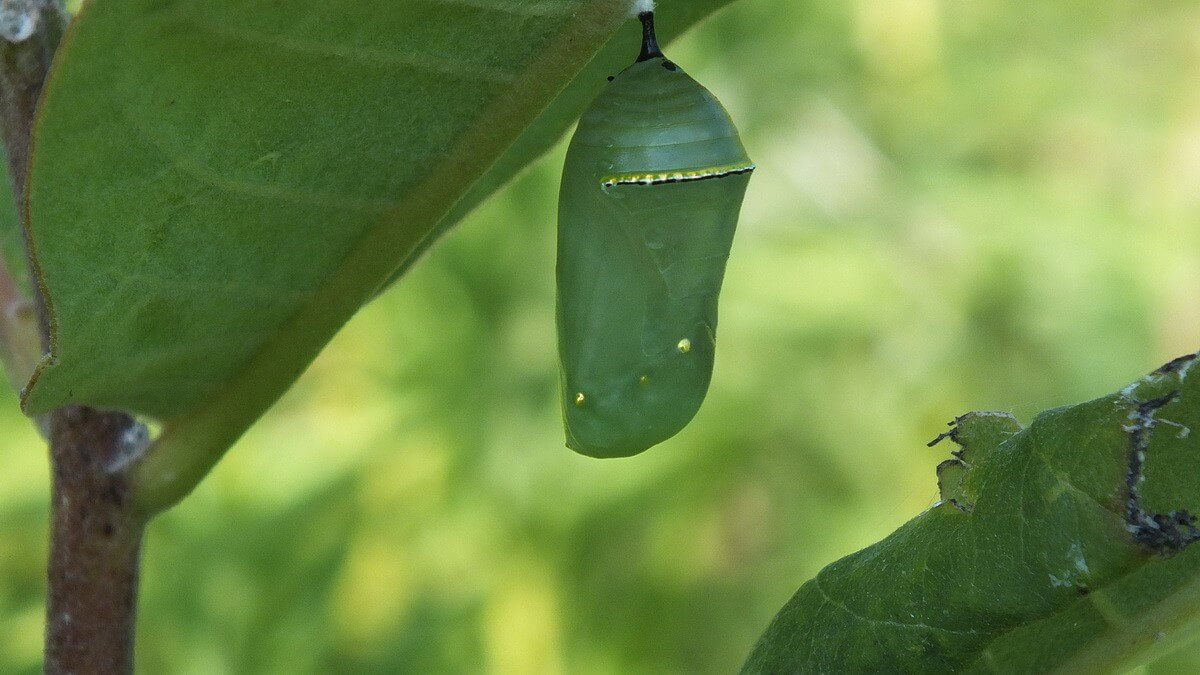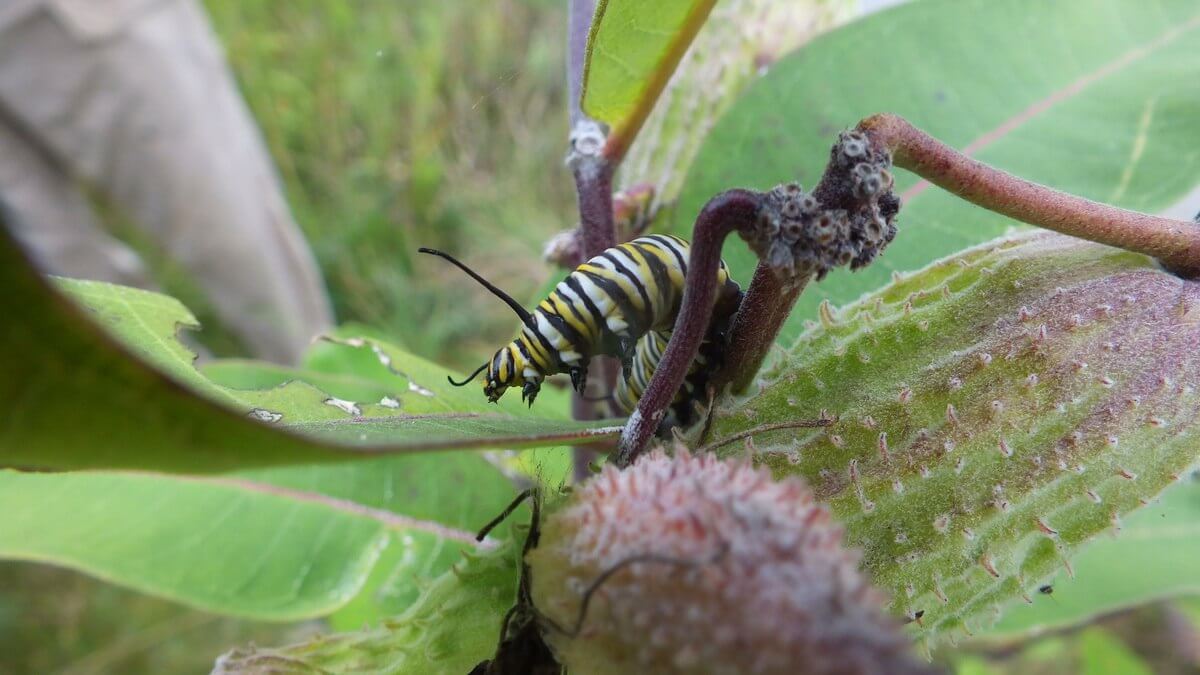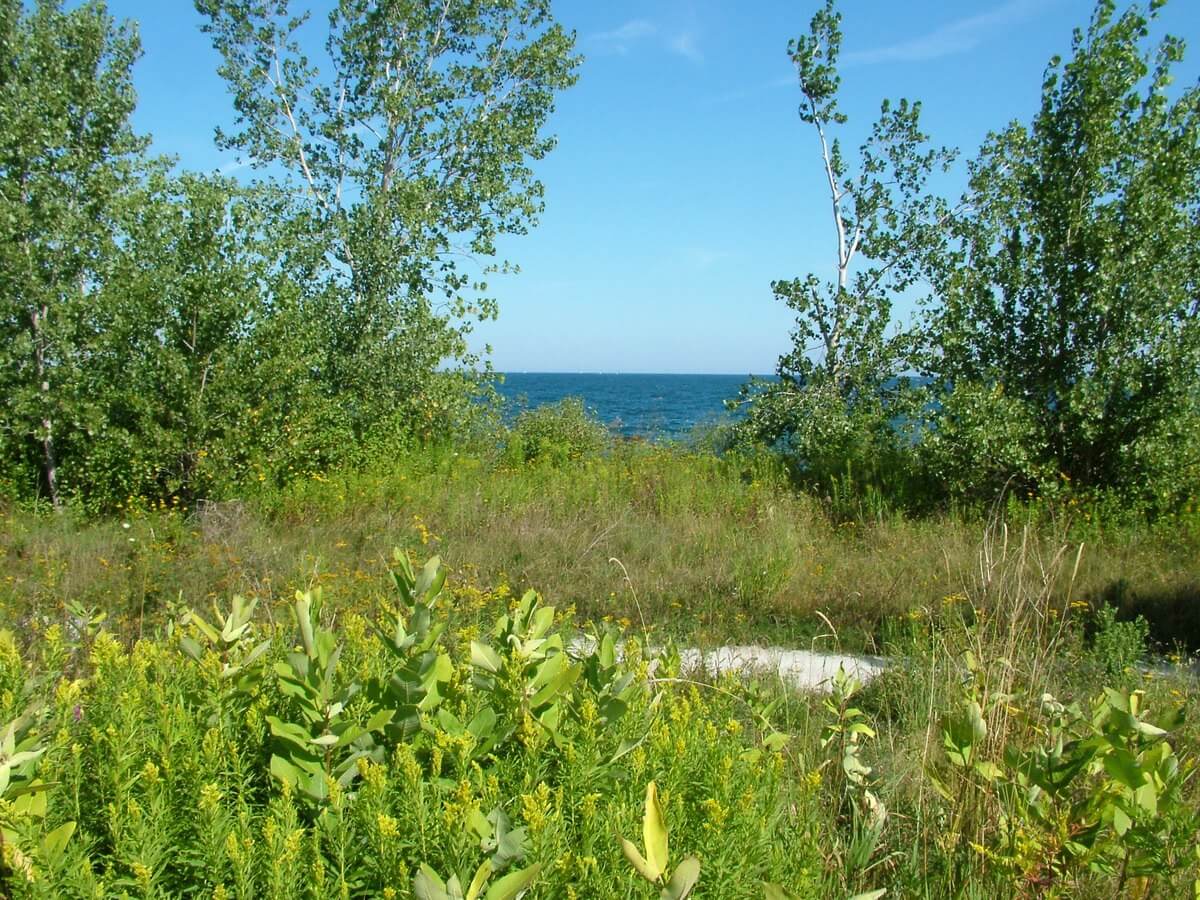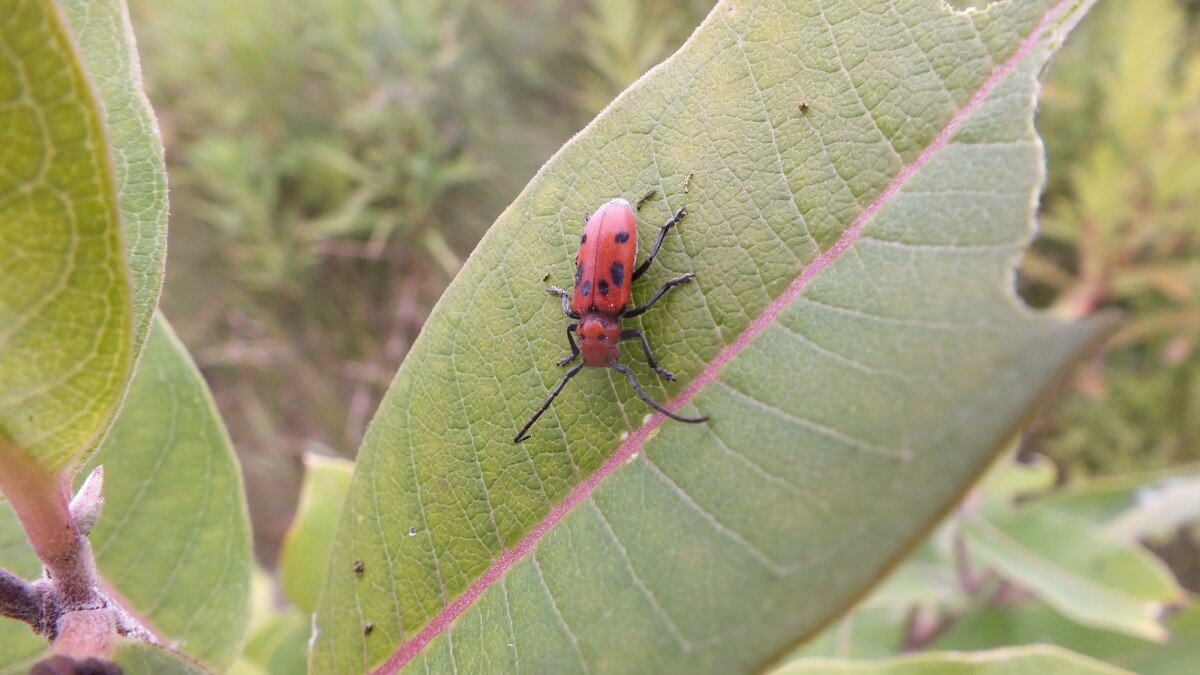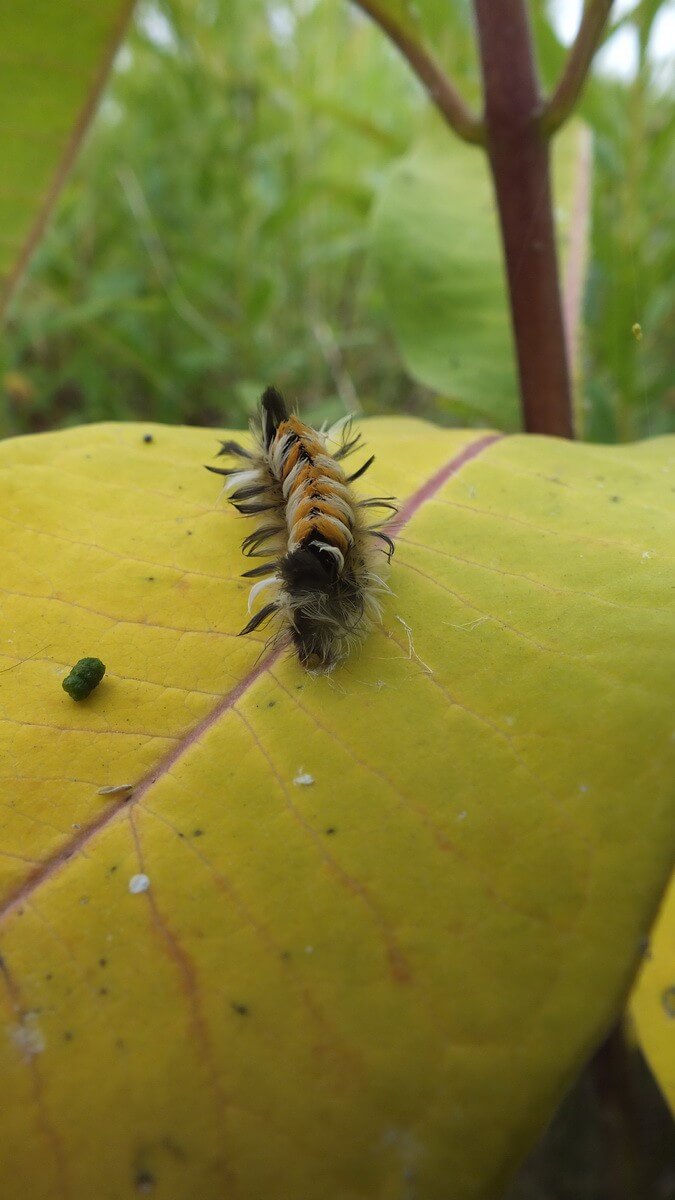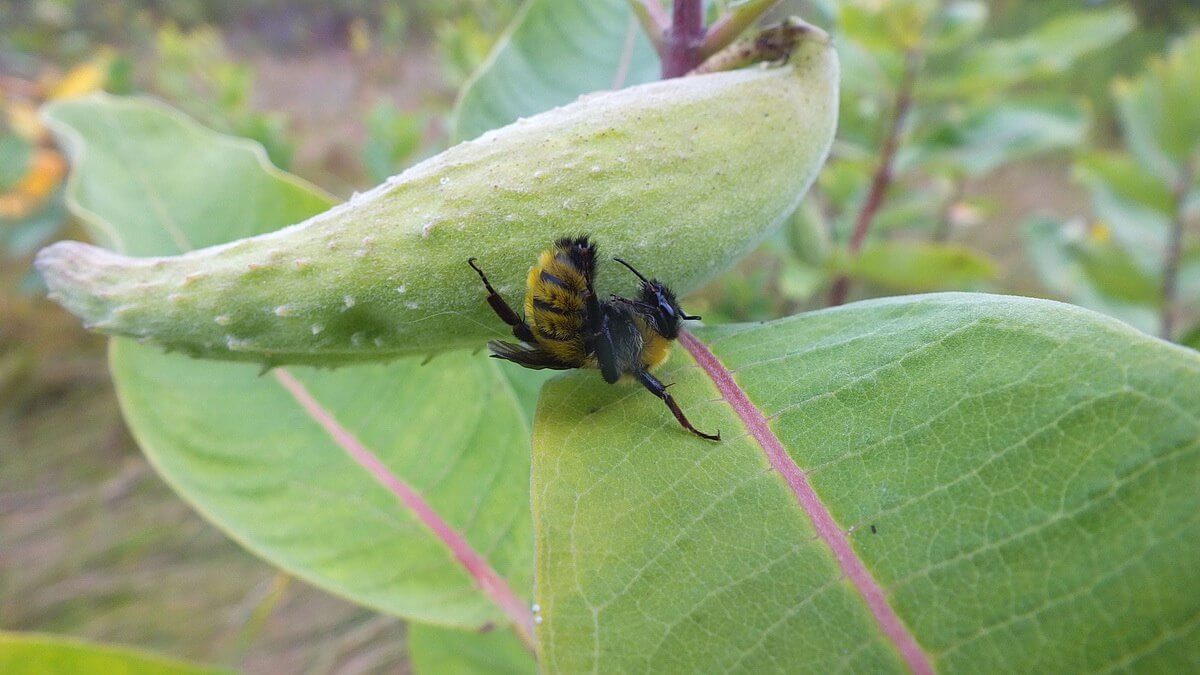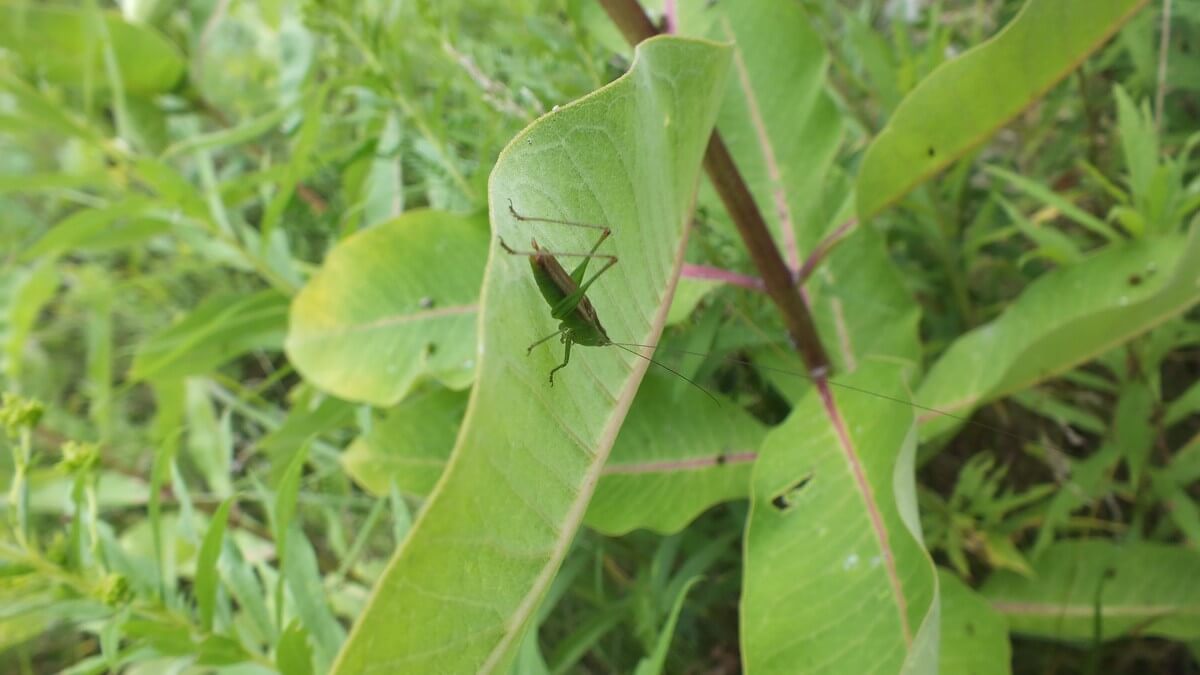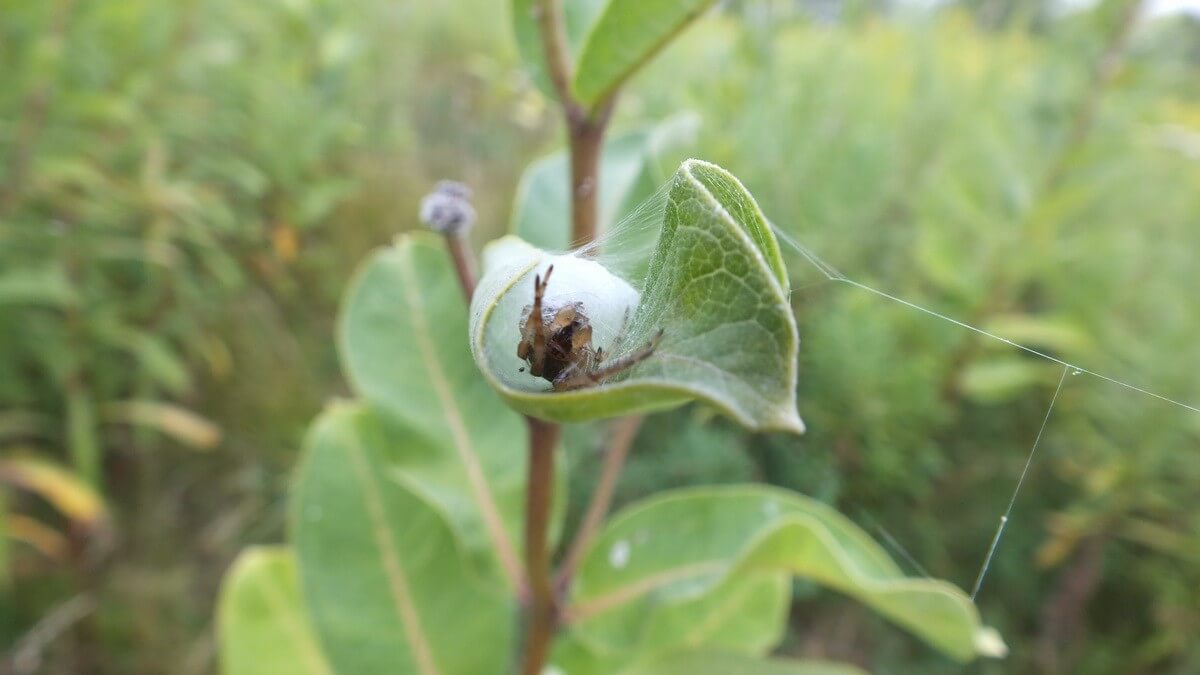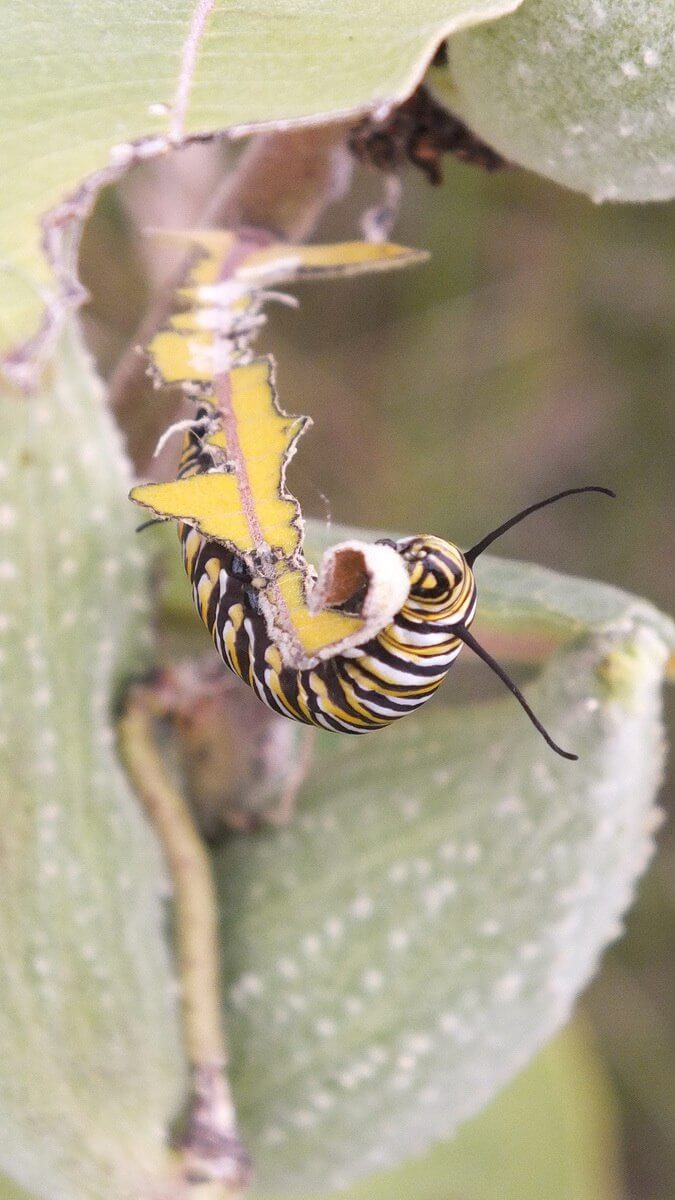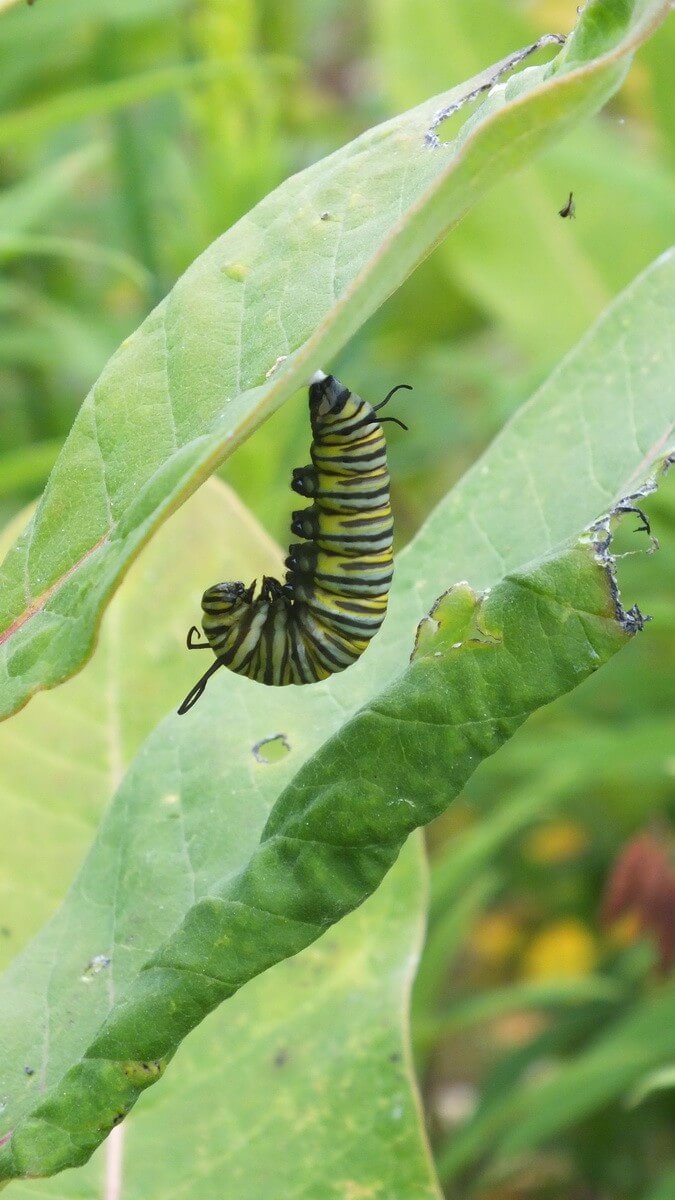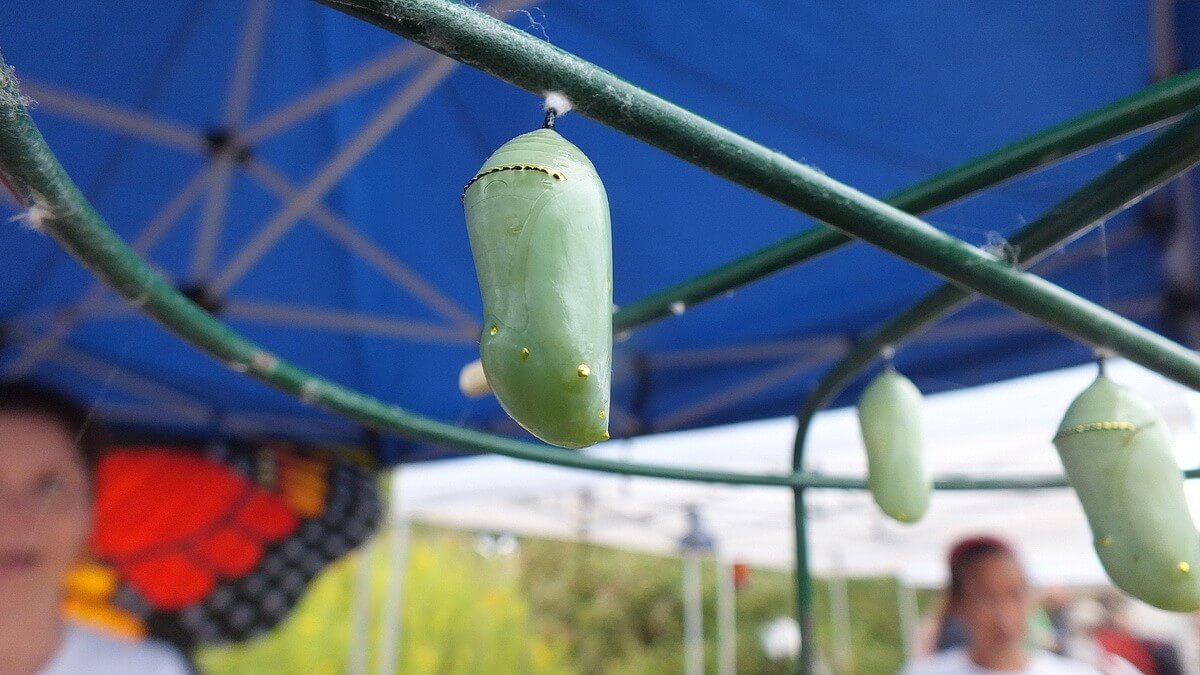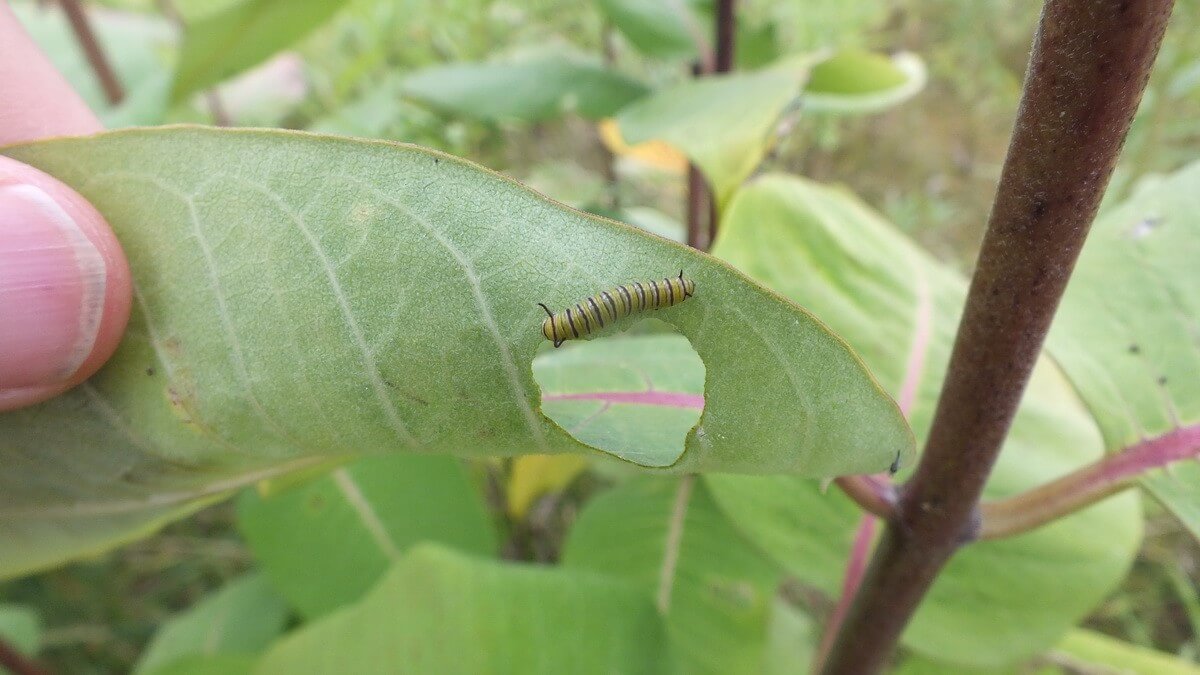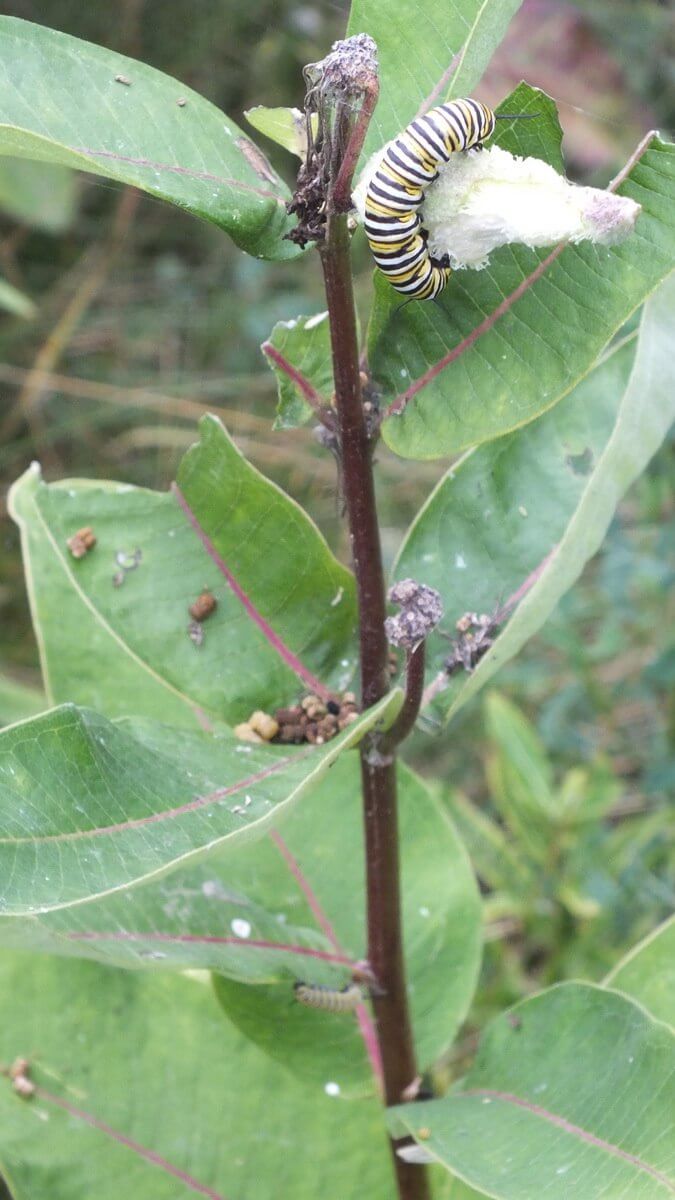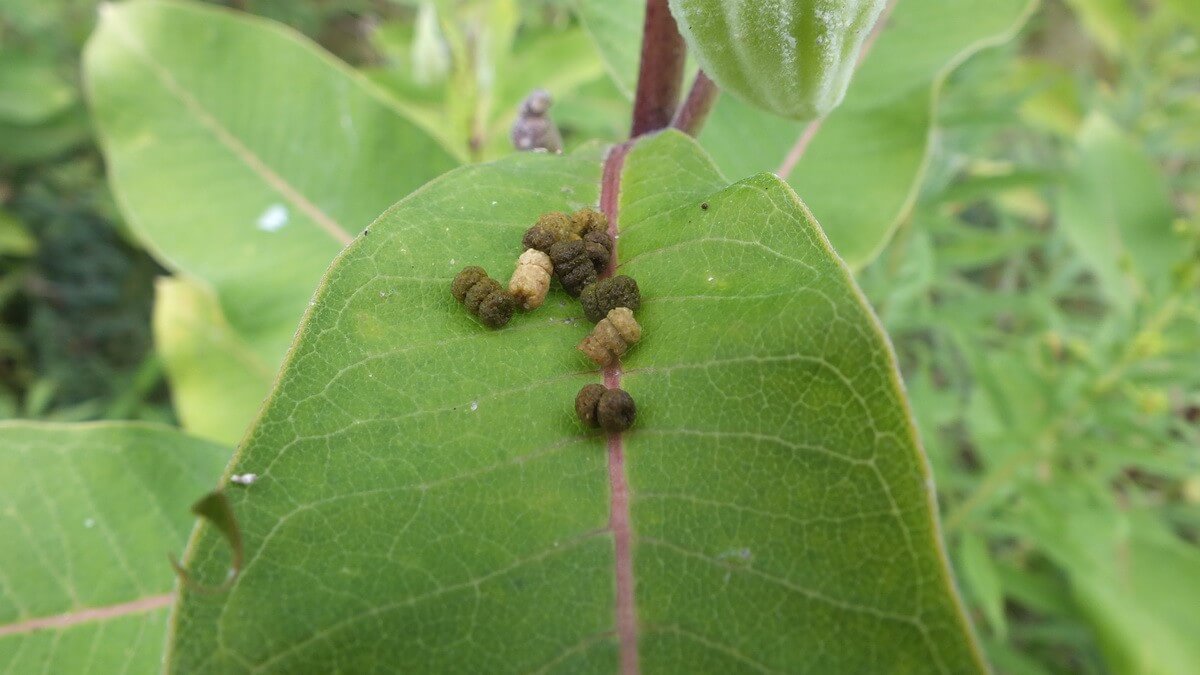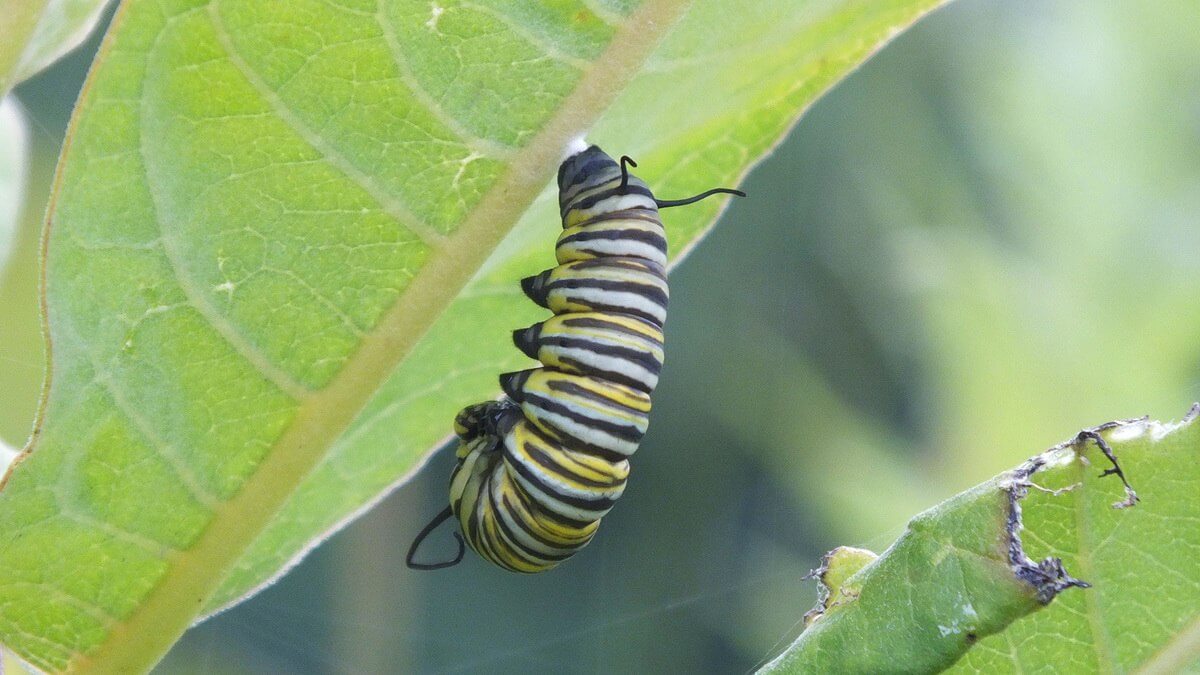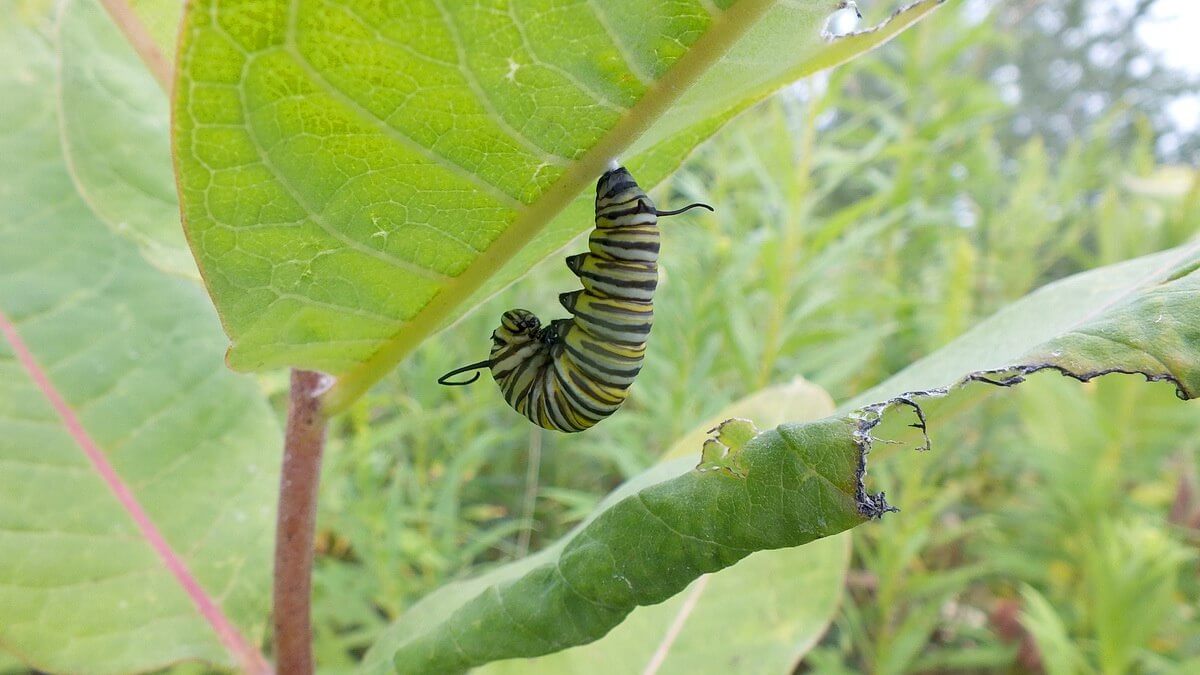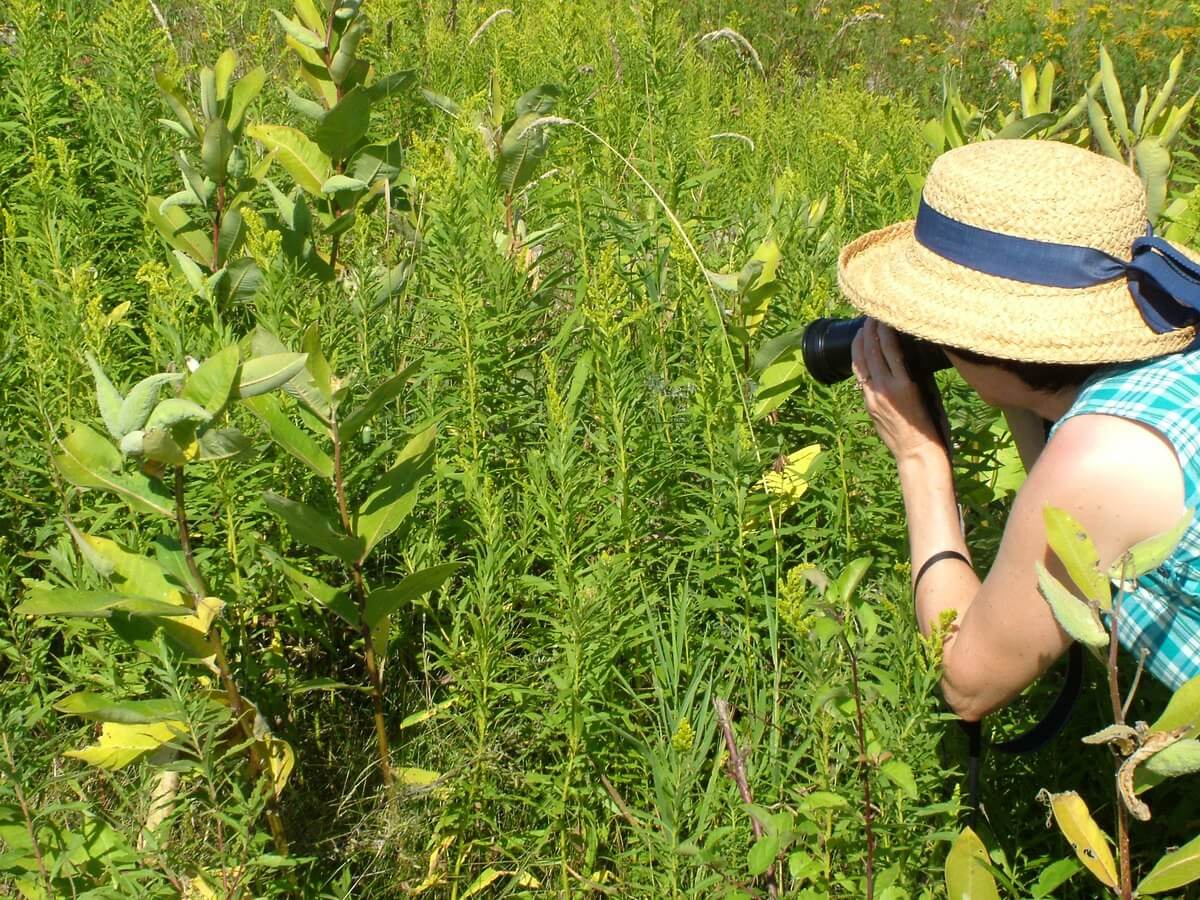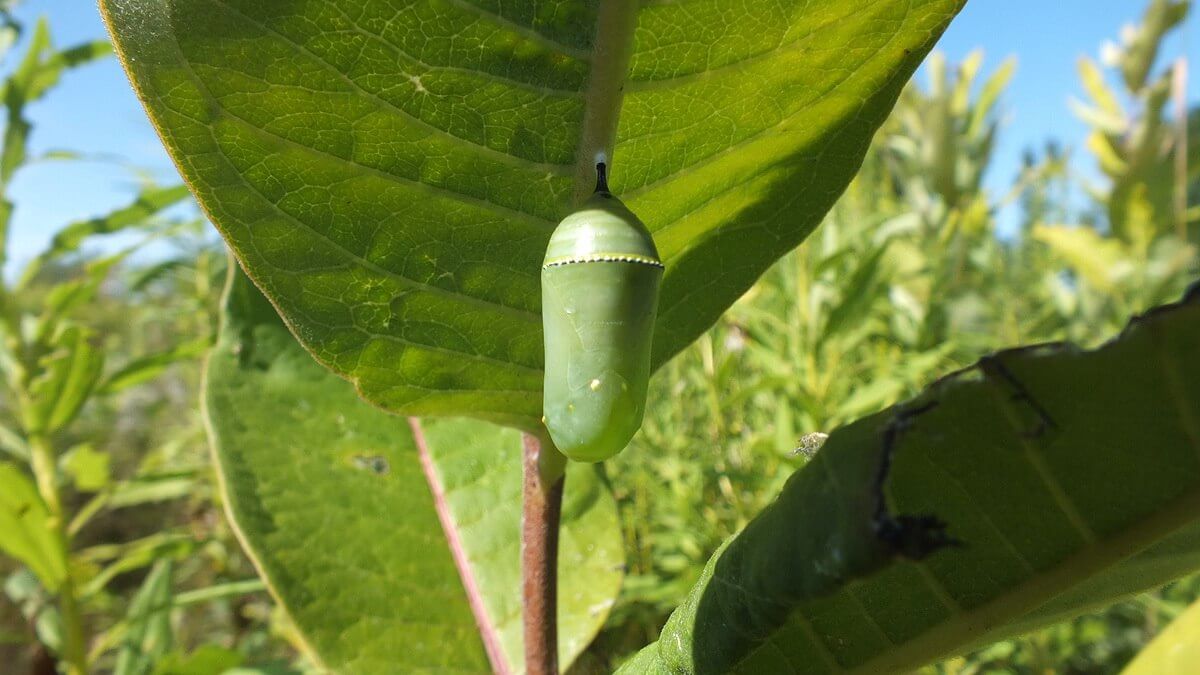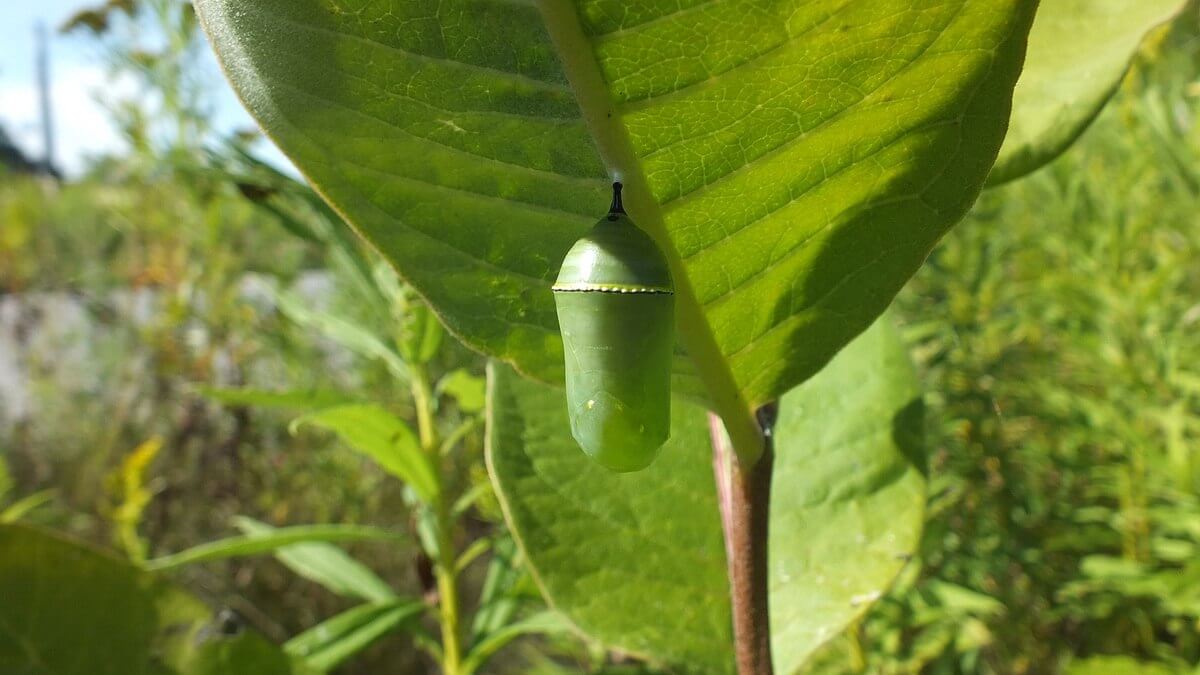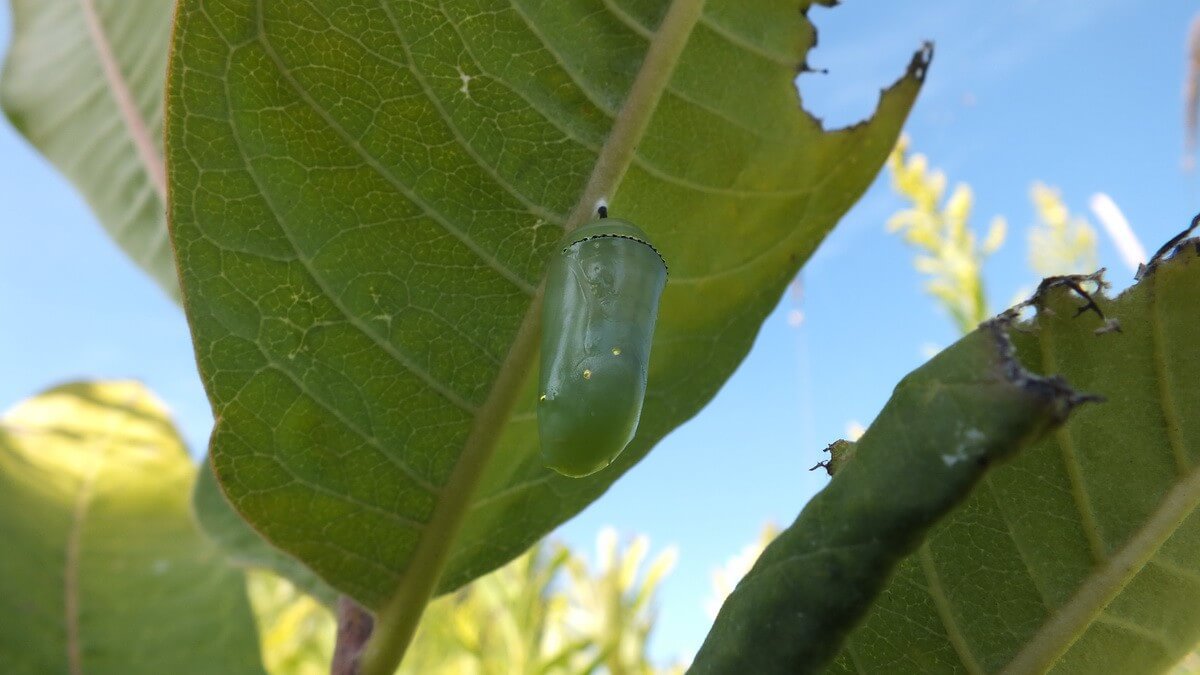Monarch Butterfly Chrysalis At Tommy Thompson Park
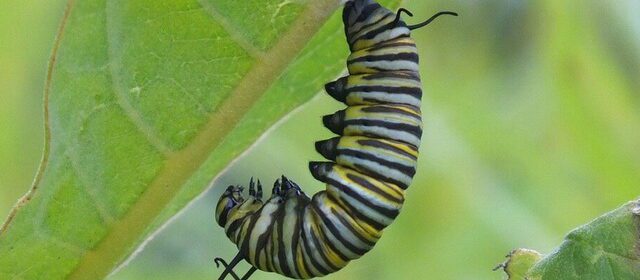
One summer, Bob and I made for Tommy Thompson Park in Toronto, Ontario, Canada. We were certain, given the large number of Monarch Butterfly larvae that we had seen before, that we would be able to find a chrysalis on one of the many Milkweed plants. Our memory served us well as to the locations of a good share of the well-advanced larvae, but it took us two days to actually locate a Monarch’s chrysalis amid the fields of stately Milkweed plants. Our persistence had paid off!
At the time, Tommy Thompson Park was hosting it’s 6th Annual Butterfly Festival, so Bob and I arrived at the Park promptly at 8:30 a.m. to avoid the crowds. We made a beeline to the three areas most populated with caterpillars a week earlier. Imagine our dismay when not a caterpillar was to be seen on those same plants…well, there were two or three. We wondered where they could have gone. Surely some of them had been ready to pupate given their size, and once in the chrysalis stage, they remain that way for up to two weeks.
We took the task seriously, and deliberately checked hundreds of Milkweed plants along the paved paths. In the process, we came up with all manner of insects making the Milkweed plants their home…
Red Milkweed Beetles,
Milkweed Tiger Moth Caterpillars that resembled some finely hand-crafted fishing flies,
Bees by the dozens seeking shelter underneath the Milkweed leaves and pods,
Common Conehead Katydids with incredibly long antennae,
Sac Spiders that always promptly emerged from their delicately woven nests,
and a Green Darner Dragonfly, to name a few.
As I already mentioned, the patches of Milkweed that had such an abundance of Monarch Butterfly larvae a week earlier seemed devoid of caterpillars with the exception of a couple. I was surprised when we found one such Monarch larva in the final stages of consuming a very ripe leaf almost dispensing with every inch of it in the process. Over the course of the morning and early afternoon, we did discover some new patches of Milkweed that were rich in Monarch larvae but not a single chrysalis to be found.
Given the onset of rain as we began our hike the Sunday before, we did not walk very far out onto the Spit. This Saturday, however, we covered a longer distance, going as far as the first large pond. Over the course of our search, we counted approximately 50 Monarch larvae in varying stages of development, but I must admit, after achieving that number, it didn’t seem important to keep track of their numbers any more. We just scanned for chrysalides or pupae.
Along about mid-morning, Bob’s keen eye zeroed in on one good-sized caterpillar that had dropped down into the familiar “J’ position beneath a Milkweed leaf. The little silken pad spun by the larva was readily visible between the caterpillar’s two rear prolegs and the milkweed leaf.
This was exciting, but there was no way of knowing how long the caterpillar had been like that. It could remain suspended upside down for up to 8 hours before pupating and leaving itself encased in an articulated green exoskeleton, the chrysalis or pupa.
I know that once ready to pupate, the process of shedding its skin for the last time and turning into the green chrysalis takes only a matter of minutes, but since we had no idea how long the caterpillar had been dangling from the leaf, we were not prepared to devote hours to the observation, so we moved on.
Bob and I continued our explorations until mid-afternoon, but decided that our chances of finding a chrysalis were pretty slim. I was deflated. Then, we checked in on the exhibitors’ set up for the Butterfly Festival where one group had some examples of chrysalides on display. That was nice to see but not what we had been hoping for.
We did learn, however, that there is a particular term used to describe a Monarch larva each time it sheds its external skin. Its growth is so rapid between hatching from the egg until it is ready to pupate, that a larva molts a total of four or five times.
The terms used to reference each molt are Instar 1 through Instar 5, with Instar 5 being the largest and last stage before pupating. We had seen some very tiny Monarch caterpillars that day, such as this Instar 4 larva that was about as wide as Bob’s thumb nail,
and some that were about three inches long such as this Instar 5 at the top of the photo. Note its size in comparison to the Instar 4 near the bottom of the photo. We had also taken note of the fact that smaller larvae were very pale without any discernible stripes, which become more distinct each time the larvae molt. Our knowledge was growing.
Because the larvae consume so much food and grow so quickly, they produce a lot of excrement or frass, as seen on the above Milkweed leaf. The constant eating enables them to store sufficient energy in the form of fat and nutrients to sustain them through the pupal stage when they do not eat.
The butterfly experts also informed Bob and me that it is almost impossible to find a chrysalis in its natural habitat, and that most Monarch caterpillars remove themselves from Milkweed plants when it is time to pupate. Any solid support will do for them to attach themselves. Hmpff! We had been looking in the wrong place all along but were pretty sure we could find one the next day.
This little caterpillar wasn’t going anywhere. Bob and I left for home determined to go back the following day and march right back to check on its well-being. Surely a chrysalis would be there for us to see. I was on pins and needles wondering if a careless hiker might have knocked it from its sheltering leaf, or a wasp might have predated the cocooned caterpillar even before it could start the process of metamorphosis.
Our relief was palpable when, once again, Bob located the shimmering green chrysalis suspended in the shade beneath a large Milkweed leaf, right where we had left the upside-down larva. As cyclists and walkers passed by, we were careful not to draw attention to the object of our curiosity. We had never before seen a Monarch chrysalis in its natural habitat, and we were very protective. They are a magnificent almost translucent pale green with sparkling gold specks that reflect light like true metal.
Partially circling the upper end of the chrysalis is a gold crown composed of about 24 gold spots, while 12 others appear on other parts of the chrysalis. Analyses done of the gold material have revealed that it is not metal even though it glints like real gold.
Also obvious, when looking at the chrysalis, was a pattern of lines etched in its thin outer shell. These lines remain behind on the shell after a Monarch Butterfly emerges, but their existence seems to be a blueprint for the parts of the butterfly developing within.
All that was left now was for Bob and me to monitor the pupa that holds the developing Monarch Butterfly. We will try to get back within the next week to see if we can distinguish any differences in its external appearance. It would be so nice to actually witness the emergence of the adult butterfly but, as that process takes between 10 days and 2 weeks, it is doubtful that we could arrange to be there at just the right moment. Only time will tell.
Related:
Among the Winged Magic at El Rosario Monarch Butterfly Reserve
Frame To Frame – Bob and Jean

